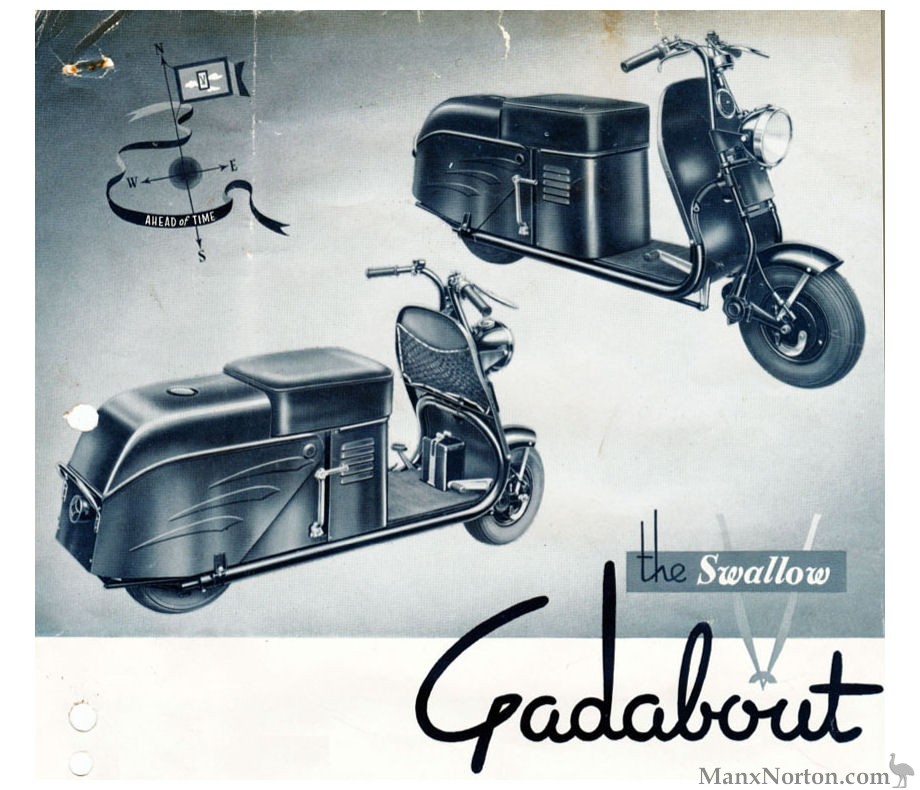


Introduced in 1946 the Gadabout Scooter was supplied to police forces in the UK, and to other essential services. A heavyweight designed by Frank Rainbow, it was powered by a Villiers 9D engine and had the unusual feature of employing the frame as an exhaust component. The Gadabout MkII, introduced in 1950, had a 10D engine, and a commercial version was also built, with some of the later machines fitted with a 197cc Villiers 6E.
Frank Rainbow also built a delightful machine named the Rainbow Joyrider, which Swallow did not put into production.

CONSTRUCTION
The Chassis consists of one single unit, of welded tubular construction, to which is attached the steering head carrying the one inch diameter tubular handlebars. The front wheel is mounted on forks incorporating a torsion bar, and suspension is by means of rubber bushes in torsion. The wheels are of pressed steel construction having detachable rim flanges facilitating tyre removal. All body work is manufactured from sheet steel, suitably reinforced for rigidity, and the rear fairings of the Gadabout are hinged to provide access to the rear wheel.
The sheet steel fuel tank is of 2½ gallons capacity and is provided with a filler cap which also serves as an oil measure. Exhaust gases from the power unit, details of which will be found overleaf, pass into the rear portion of the main chassis tubes which act as silencers.
CONTROLS
Bowden cable operated brakes are provided on front and rear wheels, the front brake having a hand lever control, and the rear brake a foot pedal control. Control of the clutch is by means Of a hand lever and a Bowden cable, while gear change is effected by a foot control and rods.
IGNITION AND LIGHTING
A flywheel magneto provides for ignition and also, through a rectifier, power for an accumulator and lighting set, which includes a 5½" diameter headlamp, an ammeter and a dipper switch. Illumination is also provided for the speedometer which is driven by the front wheel.